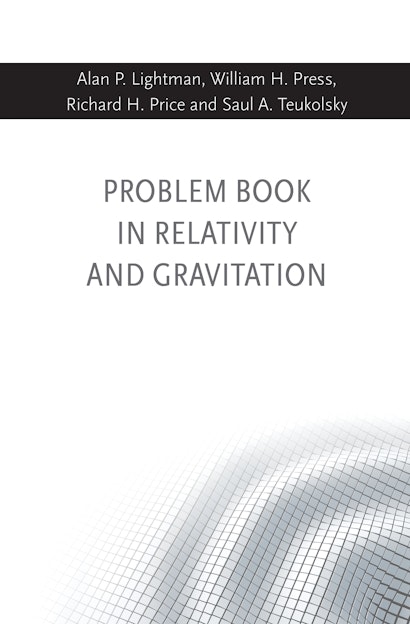Important and useful to every student of relativity, this book is a unique collection of some 475 problems—with solutions—in the fields of special and general relativity, gravitation, relativistic astrophysics, and cosmology. The problems are expressed in broad physical terms to enhance their pertinence to readers with diverse backgrounds.
In their solutions, the authors have attempted to convey a mode of approach to these kinds of problems, revealing procedures that can reduce the labor of calculations while avoiding the pitfall of too much or too powerful formalism. Although well suited for individual use, the volume may also be used with one of the modem textbooks in general relativity.
Alan P. Lightman is professor of the practice of the humanities at the Massachusetts Institute of Technology. His books include Screening Room and Einstein’s Dreams. William H. Press is the Warren J. and Viola M. Raymer Professor in Computer Science and in Integrative Biology at the University of Texas, Austin. Richard H. Price is senior lecturer in physics at the Massachusetts Institute of Technology. He is the coeditor of Black Holes. Saul A. Teukolsky is the Hans A. Bethe Professor of Physics and Astrophysics at Cornell University and the coauthor of Black Holes, White Dwarfs and Neutron Stars. Press and Teukolsky are coauthors in the Numerical Recipes book series.
"This book is a classic and easily the best way for students learning general relativity to get experience doing problems. A wide variety of topics are covered and extensive solutions are given to the insightfully formulated exercises. This is a wonderful tool for becoming an expert in a beautiful subject."—Sean Carroll, author of Spacetime and Geometry: An Introduction to General Relativity
"When you first meet them, special and general relativity seem absurd and paradoxical. When you finally reach the point of understanding them, they make perfect sense, but the only way to get there is by solving problems. This classic text is an invaluable resource for students wanting to make this journey."—John Baez, University of California, Riverside
Praise for the original edition: "This work is full of interesting problems, arranged by subject and graded by difficulty. It is full of intellectual content, and it is much more than modern pedagogy. It is modern physics, much of it at the frontiers, done in modern ways."—John A. Wheeler, Princeton University

